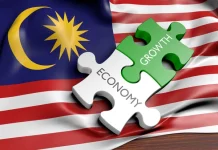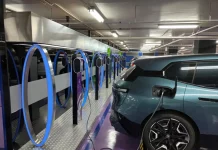Every minute, South Korea’s household debt rises by an estimated US$100,000 as projected from Bank of Korea 2019 figures, amounting to a whopping US$1.7 trillion today. Every day, more than 100 South Koreans are declared bankrupt. South Korea’s government debt has skyrocketed to 840.2 trillion won (US$693 billion), an increase of 111 trillion won in just 6 months in response to the Covid-19 pandemic.
The World in Debt
But debt is not only a Korean problem. In fact, according to S&P and the OECD, the debt of all nations reached US$53 trillion in the first quarter of 2020, out of which 34 of the world’s richest nations borrowed US$11.4 trillion. For corporations, the debt at the end of 2019 reached an all-time high of US$13.5 trillion.
These figures are massive. But what’s alarming is the repayment potential of these countries. For the world’s richest nations, their national growth over the past 10 years has been dismal. What answer then do these countries have for the piling debt when the economy is not growing?
Quantitative easing (QE). What was once unconventional monetary policy is now becoming the new norm since the crisis of 2008. The Central Bank buys government bonds and other financial assets through the printing of money. As more money circulates in the economy, people’s spending power increases. For an economy that is growing, this is fine. But if not, this can lead to economic ruin. As it turns out, many countries will proceed with QE measures amidst the Covid-19 pandemic.
The Paradox of Productivity
So what’s next for the global economy? The world has been slowing down since its recovery from the 2008 crisis, hovering between 3.5 to 3.9 percent of real GDP growth before dipping to 2.9 percent in 2019, and is expected to dip further to -3 percent in 2020. To jolt economic growth back to life, countries embarked on massive global infrastructure spending (estimated to increase to US$94 trillion by 2040) to boost production capacity and increase global GDP growth.
Unfortunately, little has changed. Why is the economy still slowing down? Why do these massive investments lead to only marginal increases in productivity?
Here are 3 explanations:
- Widening wealth gap. When you have 1 percent of the population owning half of the world’s wealth, we have a problem. In the OECD, 99 percent of all businesses are SMEs, with almost 1 out of 3 people working in a micro firm. In ASEAN, SMEs represent 95 to 99 percent of all businesses, generating around 97 percent of all employment. That’s a pretty steep number. This means that only 1 to 5 percent of businesses have the financial power to create deep economic impact. And only 1 percent of the population have the privilege to fund new creations and explore different frontiers because they can afford to do so. But most people can only afford to survive and produce just enough to pay back their debts.Creativity for them remains in the realm of the mind. Indonesia for example have around 130 million active work force. Until today, Indonesia’s fiscal space still depends largely on energy and commodity sectors (around 70 percent) and is unable to develop other innovative industries effectively because a significant number of its population are a struggling working class and stuck in poverty. This is the same story in many countries in Asia and Africa. No amount of education investment will ever change that situation because people are focused on surviving, not creating.
- 4IR powered by a 2IR engine. The discovery of fossil fuels in the mid 19th century powered the 2nd Industrial Revolution, vastly changing the landscape on energy, technology and infrastructure in the global economy. This gave birth to petrol powered vehicles which we still use until today. We are in the year 2020. How can we even conceive 4IR globally when we still depend on fossil fuels for our transportation and industrial production? A huge number of countries are still stuck on a 2IR economy, some are struggling on 3IR, and we have a saturated fossil fuel market. Why then do we still invest in 2IR infrastructure and expect exponential productivity?
- Aggregate efficiency. This is a term to denote the efficient use of energy in transforming a commodity up the value chain. In the height of the 2nd industrial revolution in 1905, the aggregate efficiency of production is around 3 percent, which means that 97 percent of energy used gets lost in the process. We are now currently at 20 percent aggregate efficiency. Hence, we still need to use vast amounts of energy to produce a disproportionately smaller output, and massive pollution. For example, it takes 8 pounds of feed to create just one pound of beef. That’s massive wastage. Therefore, no amount of market or labour reform will meaningfully change productivity unless we change the engine of growth.
All these are interrelated factors. We cannot diversify our fiscal space, as long as the vast majority of our people cannot effectively innovate. And they cannot innovate when the structure of our economies only favour the 1 percent and we depend on the 1 percent to create miracles for the economy. They cannot innovate because they are struggling and are preoccupied with basic survival.
Datuk Seri Nazir Razak, former Chairman of CIMB Group, once said in 2016 that one of ASEAN’s biggest obstacles to progress is the linkage between governments and big corporations. Indeed, this linkage is what stifles creativity and efficiency in economic distribution. It enriches only the top layer of society, leaving the other parts to fend for themselves.
This linkage is what perpetuates the 2IR infrastructure. Coal, fossil fuels, petrol vehicles – no wonder why we are stuck in 20th century productivity because there is vested interest in maintaining status quo and the hesitance to move into the new frontier. The good news is things are changing. Europe is investing heavily on renewable energy, and China is working on achieving power grid parity between renewables vis-à-vis fossil fuels. But for the world to really stand a chance to curb environmental disaster, this should be a global commitment at all levels.
A Sneak Peek into the Future
Technology today helps us increase aggregate efficiency. It gives birth to big data which is utilised by AI and IoT technologies, enabling us to greatly enhance our production systems and achieve near zero marginal cost. This incentivises people to produce and share things with fellow human beings for free, creating a truly global sharing economy.
This is not a distant dream. In 1999, Napster was the first experiment of a sharing economy. And then Wikipedia came. Who would have thought that we can create an active global encyclopedia for absolutely free? Wikipedia has kicked the doors to knowledge wide open for everyone, not just the rich, but for the poor people everywhere in the world. The great equalizer of knowledge is already here.
On the job front, creative destruction will step up in the next 10 years. Massive job loss due to automation will be followed equally by the creation of new jobs. But what is certain is the death of wage slavery which is a feature of the 20th century, as those same grueling jobs will be taken over by robots.
So what jobs are left? As marginal cost plunges towards zero, people do not require big fat salaries to afford things anymore. Entrepreneurship will be a thing of the past, as the creation of value will be the work of robots. The sector of the future will be that of the humanities viz. those that preserve our humanity in a highly digitalised world such as nursing homes, nurseries and inter-faith institutions. And perhaps by that time, the mass majority can finally be emancipated and contribute value to the next frontier of human civilisation.










